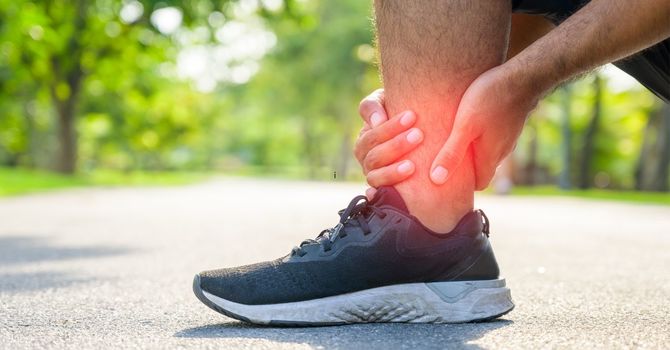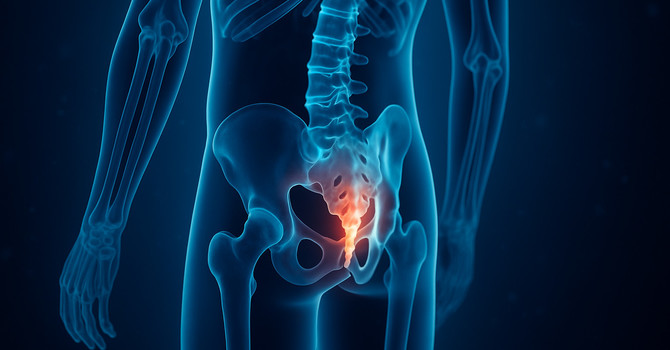Being physically active affects almost every system in the body. Movement is in our DNA. Whether you believe in divine creation or evolution, our physiology is designed for, based on and depending, on movement. But we have now designed our world based on speed and efficiency. We can transport ourselves, information and goods faster and further than ever before without physical activity. This is certainly more convenient and support growth and prosperity, but for our bodies, it is not a natural state. To me, it seems that every time we act against what nature intended, there is a price to pay.
We have heard repeatedly that a sedentary lifestyle is bad for us – even that “sitting is the new smoking”. Most people relate it to weight gains, heart disease, and muscle weakness - in themselves great reasons to become more active. Below I am sharing a list of reasons to consider when evaluating your personal level of physical activity. I'd like to make that list longer in hopes that you'll be enticed to make movement your new addiction in 2019. Please note I am leaving out other considerations, such as nutrition, but everything is connected. Therefore, please remember physical activity is just one of many aspects to consider.
DISCLAIMER: I don’t claim that this list will be complete nor do I pretend to be an expert in every field or having read and memorized every research paper on these topics. The intended purpose is to for you to simply be informed and able to make choices that will benefit your health and wellness.
- Muscles. It is true for most things in nature that if it serves no purpose it doesn’t exist. In other words, If you don’t use it, you lose it. Known as Davis' Law, this is true for muscles as well (and other soft tissue) will increase or decrease in volume and strength based on the demand we expose them to. If we are more physically active, we will build and maintain more muscle mass.
- Bones. Like muscles, the density and strength of our bones adapt to the demand we expose them to – here called Wolff’s Law. The more active we are, the higher bone density we will build and maintain and thereby decrease the risk of osteoporosis as we age.
- Joints. The joints are truly what allows for movement of our skeleton. It’s a complicated balance between freedom of movement and stability, but with physical activity the joints are kept healthy by allowing for better lubrication and transport of nutrients in the cartilage of the joints. Physical activity decreases the risk and progression of many joint diseases, including osteoarthritis.
- Flexibility. If not moving our joints frequently we quickly lose freedom of movement. With physical activity we will maintain or even increase our freedom of movement. This is important for activities of daily living, but also decreases the risk of injuries if we slip or fall.
- Balance. Balance is a learned skill.The more we practice balance, the better we become at it. With being physically active we challenge the balance and develop that skill. Some activities, like Yoga, does this more than for example sitting on a stationary bike. Having a good sense of balance decreases the risk of slips and falls.
- Reflexes. Our bodies are well equipped with reflexes to act fast to avoid injury when unexpected things happen. However, these reflexes become more effective if we are physically active and constantly challenge our nervous system to manage the information our different tissues send to our spinal cord and brain.
- Coordination. With improved proprioception (your nervous system’s ability to sense its own position and movements) through multiplanar movement, we ensure better control in our movement and in our hand-eye coordination. It is a complicated symphony between vision, sensation of touch, proprioception, movement processing in the brain, nerve signals to and from the brain through the spinal cord, muscle activation, and much more.
- Neuroplasticity. Movements are controlled by a complicated network of neural pathways connecting the brain, spinal cord, peripheral nerves, and muscles. When a dancer learns new dance moves, a toddler learns how to ride a bike, a stroke victim re-learns how to walk, a vast network of new neural pathways develops. Neurons are literally reaching out to each other, changing the flow of information through the nervous system. Pathways not used will over time be lost and rebuilding those pathways can be much harder than maintaining them.
- Heart. Physical activity increases the need for energy and oxygen in the active muscle tissue. Transporting those to the muscles and waste products away from the muscles is a task for the blood which is pushed through our body by the powerful pumping action of our heart. The heart is a mechanical pump with 4 chambers, all made of specialized muscle tissue, an ingeniously designed electrical system and a network of blood vessels. Physical activity strengthens the heart and makes it more effective and better at adjusting to a changing activity level throughout your different activities.
- Lungs. The lungs take care of the gas exchange between the air around us and our blood – primarily the exchange of oxygen from air to blood and carbon dioxide from blood to air. During physical activity this gas exchange is increased, as an increased amount of carbon dioxide in our blood cause our nervous system to increase our respiratory rate. With physical activity we strengthen the muscles of respiration, make the gas exchange in the lungs more efficient, increases the blood flow to the lungs, as well as expands the active volume of our lungs.
- Blood. The blood has a seemingly endless number of functions for the body. I will limit this to the transport of gasses and energy to the working muscles. Oxygen is transported from the lungs to the muscles and in return the carbon dioxide is transported in the opposite direction. For simplification, the energy to the working muscles comes in two forms: either glucose or fatty acids. Further simplified, the glucose comes from the liver where it has been built from sugars, fats or proteins from food ingested or from fatty acids drawn from the fat deposits in our body. When glucose levels in our body is high, the pancreas releases insulin which signals for the muscles to prefer glucose as fuel and for the fat cells to convert glucose to fat and store it. When glucose levels are low, the insulin levels are low as well and the fat cells will release the fatty acids back into the blood. The liver will take the fat from the blood and convert it into glucose and the muscles pull fatty acid out of the blood and use that as fuel through fatty acid oxidation. The glucose can travel around in the blood freely, however, fatty acids don’t mix well with blood (as blood is primarily water). Fatty acids are therefore transported around in the blood in little “balloons” named Cholesterol. With physical activity, the ability for the blood to actively transport these components around is improved and the levels of hemoglobin, cholesterol, and blood glucose is much better controlled.
- Blood Vessels. The blood vessels are a huge closed pressurized network of “pipes” for the blood to be pumped around in. Roughly, we divide the blood vessels into 3 major groups: arteries, capillaries, and veins. In the body, the arteries transport the blood from the heart to the area of the body where it’s needed. The capillaries are the fine network of very small blood vessels that deliver the nutrients to the local cells and collect waste products in return. The veins there from transport the blood back to the heart. Arteries expand and restrict based on signals from the autonomic nervous system and can that way control what tissues get more blood and what tissues get less. With regular physical activity, these functions become more effective. With physical activity the body creates more and healthier capillaries and is therefore better at getting the blood out to the active tissues. The veins also benefit from physical activity by staying flexible and open for a better blood flow back to the heart. When active muscles squeeze around the veins the blood is pushed towards the heart more easily, thereby essentially helping the heart pumping the blood around.
- Lymphatic drainage. The lymphatic system is a body wide network of vessels that drain waste and extra cellular fluid (together called lymph) through lymph nodes where it is filtered and cleaned before released back into the blood. In a sense the lymphatic system is our internal sewer system and an essential part of our immune system. Physical activity helps this system drain the lymph better and helps the immune system clean the lymph more efficiently.
++++++++++
This is the first installment in this 2-part blog. Tune in next week for the rest of the list where we will dive further into more topics such as Digestion, Metabolism, Cholesterol, Diabetes, etc.
++++++++++
Sincerely in health,
Dr. Kenneth Stelsoe, BSc., DC
Owner / Chiropractor




